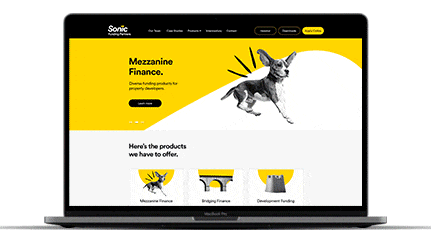Leading Tips for Producing an Impactful Internet Site Layout That Converts
In today's digital landscape, the importance of an impactful internet site layout can not be overemphasized, especially when it involves converting site visitors into consumers. To achieve this, one have to think about a variety of variables, including recognizing the target audience, focusing on user experience, and enhancing for mobile systems. Furthermore, the critical use compelling call-to-actions and a well-defined aesthetic pecking order plays a vital duty in assisting individuals through their journey. As we explore these vital aspects, it comes to be noticeable that the success of your site pivots on more than simply aesthetics; it requires a thoughtful method to layout and functionality.

Understand Your Target Audience
Comprehending your target market is basic to effective web site layout, as it lays the groundwork for producing an engaging user experience. Determining who your individuals are, including their demographics, choices, and actions, allows developers to customize the web site's material, design, and capability to meet certain requirements.
Carrying out comprehensive market study is crucial in this procedure. Surveys, interviews, and analytics can provide useful insights right into individual expectations and pain factors. By compiling this information, designers can develop individual personalities that stand for different sectors of the audience, making certain that layout choices are informed and appropriate.
Moreover, understanding the target market aids in selecting ideal layout elements such as color design, typography, and images that resonate with customers. A site that talks straight to its target market fosters a sense of connection and count on, motivating longer gos to and higher conversion rates.
Inevitably, a user-centered technique to site style not only improves user satisfaction yet likewise sustains business purposes by driving interaction and commitment. By prioritizing the needs and preferences of the target audience, an internet site can successfully offer its objective and accomplish desired end results.
Prioritize Customer Experience
To enhance the general performance of an internet site, prioritizing user experience (UX) is crucial (Website Design). A properly designed UX guarantees that site visitors can navigate the site effortlessly, discover information promptly, and engage with material meaningfully. This causes raised user satisfaction and higher conversion prices
Begin by carrying out intuitive navigation. Menus should be practically structured, permitting individuals to locate key areas of the website with marginal effort. Consistency in design elements, such as color design and font styles, cultivates familiarity, which is crucial for keeping individual involvement.
In addition, consider the packing speed of your internet site. A delay of simply a couple of seconds can lead to considerable drop-offs, as customers are much less likely to await a slow-loading web page. Improving photos and enhancing code can boost performance and keep visitors.
By focusing on customer experience, you not only create an extra pleasurable environment for visitors but likewise strengthen your brand name's reliability. Ultimately, a focus on UX is a financial investment in the lasting success of your site.
Enhance for Mobile Gadgets
Optimizing for mobile tools is crucial in today's digital landscape, where an increasing number of individuals gain access to web sites via smartphones and tablet computers. A mobile-friendly style not only enhances individual experience yet additionally plays a substantial duty in boosting online search engine positions. To accomplish this, it is necessary to embrace a responsive design that automatically gets used to various display sizes and positionings.

Filling rate is an additional critical aspect; mobile individuals are commonly much less individual and anticipate rapid access to information. By prioritizing mobile optimization, you make certain that your web site remains affordable and successfully engages a broader target market.
Use Compelling Call-to-Actions
A website's effectiveness commonly depends upon its capacity to lead site visitors toward wanted actions, making engaging call-to-actions (CTAs) vital parts of design. CTAs work as the pivotal points that guide individuals to engage with the website, whether that suggests making an acquisition, signing up for an e-newsletter, or downloading a resource.
To develop efficient CTAs, clarity is extremely important. Use succinct language that clearly communicates the activity you desire the individual to take. Expressions such as "Start," "Join Free," or "Shop Now" not only share necessity yet additionally get rid of uncertainty. The positioning of CTAs is similarly vital; they should be purposefully positioned throughout the web page to guarantee they are quickly visible, particularly in high-traffic areas.
Additionally, consider making use of directional official site hints, such as arrows or photos, to guide users toward these buttons. By focusing on these components, companies can considerably improve individual involvement, driving conversions and eventually accomplishing their internet site's goals.
Focus on Visual Hierarchy
Efficient website design relies heavily on a well-structured aesthetic pecking order that overviews customers with web content flawlessly. By organizing components in a way that prioritizes information, designers can enhance customer experience and facilitate decision-making. This involves using size, shade, comparison, and spacing strategically to accentuate the most vital parts of a webpage.
Using larger font styles for headings and subheadings develops a clear distinction between different areas, allowing users to check material easily. Furthermore, utilizing contrasting shades for buttons and calls-to-action can catch individual focus and urge communication. Whitespace is an additional important part; it prevents clutter and allows individuals to concentrate go right here on vital messages without distractions.
Photos and graphics ought to enhance the text while additionally adhering to the established power structure, reinforcing the total message (Website Design). Uniformity in design components, such as color pattern and typography, further reinforces the visual power structure, making navigation instinctive

Conclusion
To conclude, efficient website style necessitates a detailed understanding of the target audience, prioritization of user experience, and mobile optimization. The calculated use engaging call-to-actions and a well-defined visual hierarchy further boosts individual involvement. By applying these concepts, sites can next page accomplish higher conversion prices, ensuring that style components not only bring in site visitors yet also help with smooth navigation and interaction. Inevitably, a well-executed site layout functions as a crucial part in driving individual actions and achieving company objectives.